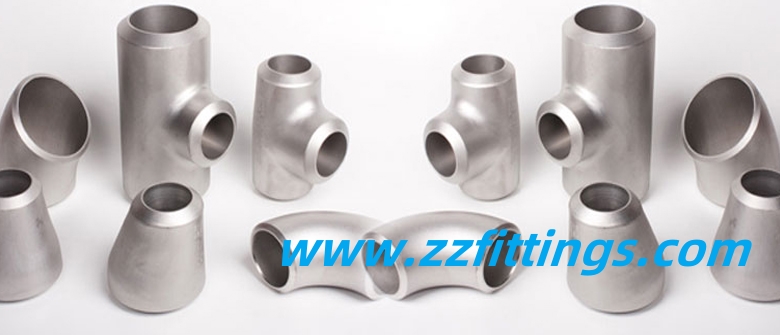
Hastelloy C22 and C276 are two crucial materials in the Hastelloy alloy series. They both have excellent corrosion resistance in severe environments. Although both alloys have high-performance characteristics, there are certain differences in chemical composition, corrosion resistance, mechanical properties, high-temperature resistance, application fields, and costs. We specializes in producing pipe fittings, flanges, bolts and other products with Hastelloy C22 and C276 materials. And we are committed to providing customers with reliable and excellent corrosion-resistant alloy solutions. Here, we will compare Hastelloy C22 and C276 in detail. This will help you understand their differences and choose the right alloy for actual application.
Hastelloy C22 and C276 Overview Difference
Hastelloy C276 is a high-performance nickel-chromium-molybdenum alloy. It contains about 57% nickel, 16% chromium, and 16% molybdenum, along with iron, tungsten, and cobalt. It is identified as UNS N10276. C276 is often used in strong acid environments like sulfuric acid, hydrochloric acid, and chloride solutions.
Hastelloy C22 was created to improve the corrosion resistance of C276 in the welded area. It is also a nickel – chromium – molybdenum alloy, containing about 56% nickel, 22% chromium, 13% molybdenum, and small amounts of iron, tungsten, and cobalt. Its standard designation is UNS N06022. Compared to C276, C22 has better and more complete corrosion resistance. It also resists pitting, crevice corrosion, intergranular corrosion, and stress corrosion cracking much better.
Hastelloy C22 and C276 Chemical Composition Difference
From the table, we can see that Hastelloy C22 has a higher chromium content, which makes it more resistant to corrosion in oxidizing environments. Meanwhile, Hastelloy C276 has more molybdenum, tungsten, and iron, giving it better corrosion resistance in reducing conditions and strong acids, especially at high temperatures.
| Element | Composition of Hastelloy C22 (UNS N06022/W N 2.4602) (%) | Composition of Hastelloy C276 (UNS N10276/W N 2.4819) (%) |
| Carbon (C) | ≤0.015 | ≤0.01 |
| Manganese (Mn) | ≤0.50 | ≤1.00 |
| Phosphorus (P) | ≤0.02 | ≤0.04 |
| Sulfur (S) | ≤0.02 | ≤0.03 |
| Silicon (Si) | ≤0.08 | – |
| Chromium (Cr) | 20.0 – 22.5 | 14.5 – 16.5 |
| Nickel (Ni) | Remainder (rem) | Remainder (rem) |
| Molybdenum (Mo) | 12.5 – 14.5 | 15.0 – 17.0 |
| Cobalt (Co) | ≤2.5 | ≤2.5 |
| Iron (Fe) | 2.0 – 6.0 | 4.0 – 7.0 |
| Tungsten (W) | 2.5 – 3.5 | 3.0 – 4.5 |
| Vanadium (V) | ≤0.35 | ≤0.35 |
Hastelloy C276 and C22 Physical Properties Difference
Hastelloy C276 and C22 have nearly identical densities, but C276 has a slightly higher melting point. This allows it to maintain excellent corrosion resistance in higher temperatures and more aggressive chemical environments, making it more stable and better suited for high-temperature applications.
| Property | Hastelloy C22 (UNS N06022/W N 2.4602) | Hastelloy C276 (UNS N10276/W N 2.4819) |
| Density (g/cm³) | 8.9 | 8.89 |
| Melting Point (°C) | 1325 – 1370 | 1350 – 1390 |
Hastelloy C276 and C22 Mechanical properties Difference
In the annealed state, C276 has a yield strength of 41 ksi (345 MPa), but its strength can be increased through pilgering. It also maintains excellent toughness at low temperatures. C22 is typically supplied in the annealed condition with a minimum yield strength of 45 ksi. However, it can be cold worked to achieve even higher strength.
| Alloy and Condition | Tensile Strength (Rm N/mm²) | Yield Strength (RP0.2 N/mm²) | Elongation (A5 %) |
| Hastelloy C22 | 690 | 283 | 40 |
| Hastelloy C276 Cold worked % | Yield strength | Ultimate tensile strength | Elongation % |
| 0 | 455 MPa [66 ksi] | 842 MPa [122 ksi] | 40 |
| 40 | 1310 MPa [190 ksi] | 1531 MPa [222 ksi] | 3.8 |
| 55 | 1531 MPa [222 ksi] | 1758 MPa [255 ksi] | 3.4 |
| 75 | 1724 MPa [250 ksi] | 1999 MPa [290 ksi] | 3.9 |
Hastelloy C276 and C22 Corrosion Resistance Difference
Hastelloy C-22 has high chromium and molybdenum content, providing excellent resistance to corrosion in oxidative environments. It is particularly resistant to localized corrosion from chlorides, such as pitting, crevice corrosion, and stress corrosion cracking. However, its resistance in high-temperature and reducing environments is slightly lower than that of C276.
Hastelloy C-276 has higher molybdenum, tungsten, and iron content, offering improved resistance to reducing corrosive environments, such as those containing hydrogen and hydrogen sulfide. It is ideal for a wider range of corrosive conditions, particularly in reducing and high-temperature environments.
Hastelloy C276 and C22 High-Temperature Resistance Difference
Hastelloy C276 has excellent oxidation resistance at high temperatures (up to 1900°F / 1038°C), making it ideal for extreme high-temperature and oxidative environments, such as in the chemical, oil, and aerospace industries.
Hastelloy C22 is suitable for medium to high-temperature conditions (around 1500°F / 815°C), it excels in environments with chlorides or oxidizing acids. However, its high-temperature oxidation resistance is slightly lower than that of C276.
Hastelloy C276 and C22 Application Difference
Hastelloy C276 is mainly used in high – temperature, highly acidic, and reducing corrosive environments. It’s widely applied in the oil and gas, chemical processing, oil refining, pharmaceutical, and paper industries. In upstream oil and gas operations, it is commonly used for tubing, casing, and liners, as it can withstand severe corrosion from H₂S, CO₂, and chlorides.In addition, it is used in marine environments for components such as valves, pumps, and propellers. Its ability to resist biofouling also makes it ideal for heat exchangers.
Hastelloy C22 is more suitable for oxidizing media, particularly in high temperatures and chloride-containing conditions. In the chemical and petrochemical sectors, it’s frequently applied to parts that touch organic materials with chlorides and to catalytic systems. It is especially suitable for high temperatures and corrosive conditions involving impure acids like formic, acetic, and even seawater.
Hastelloy C276 and C22 Cost and Performance Difference
C276 is easier to source, with more stock and a wider range of sizes. C22 is harder to find, with only a few suppliers carrying it. While C22 offers better performance, C276 is also suitable for most applications. The chemical composition of C22 and C276 is similar, and since C22 has a lower density (8.7 vs. 8.9), it should be more affordable. But because C22 isn’t produced or supplied on a large scale, its price is higher than that of C276. C276 is more cost-effective in most cases. While C22 performs well in highly oxidizing conditions, its higher price and limited availability make it less economical overall.
Your Trustworthy Hastelloy C276 and C22 Supplier
Overall, both C276 and C22 offer distinct advantages, making them suitable for various applications depending on specific project or industry needs. Both alloys offer excellent corrosion resistance, but there are still some differences between them. Therefore, it’s important to do some research for you to choose the right grade that fits your needs and provides the best protection against corrosion or damage. We are a trusted and experienced manufacturer specializing in high-performance alloy materials. Our core products include pipe fittings, flanges, bolts, and custom components made from Hastelloy C22 and C276. All products are manufactured to meet international standards, with full customization available to suit specific project requirements. We welcome inquiries and cooperation worldwide.
